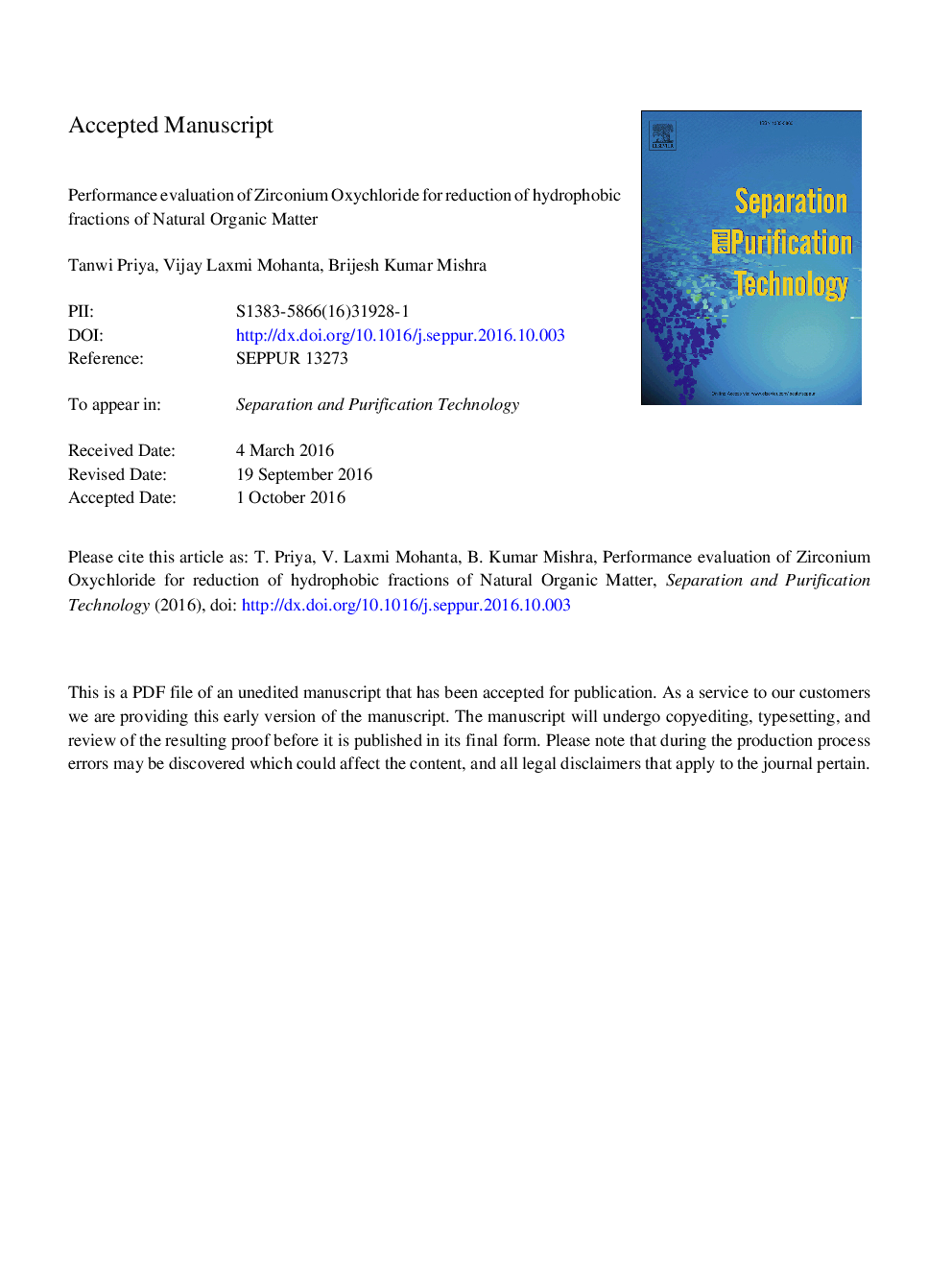| Article ID | Journal | Published Year | Pages | File Type |
|---|---|---|---|---|
| 4990169 | Separation and Purification Technology | 2017 | 21 Pages |
Abstract
Positively charged metallic coagulants agglomerate colloidal particles by entrapping them on the metallic hydroxide precipitates during charge neutralization. Coagulants destabilize the propensity of natural organic matter towards chlorine to form disinfection by-products like trihalomethanes. However, coagulant activity depends on surface charge and the rate of hydrolysis of metallic coagulants. In this study, behavior of metallic coagulants namely, [FeCl3], [Fe2(SO4)3] and [ZrOCl2·8H2O] on the reduction of hydrophobic fractions of natural organic matter were studied and compared with the traditional coagulant, alum [Al2(SO4)3·18H2O]. [ZrOCl2·8H2O] exhibited maximum removal efficiency for dissolved organic carbon and UV254 absorbing materials by 86.38% and 92.39% respectively. The analysis of zeta potential has validated the proficiency of Zr coagulant in strong flocs formation. Zirconium oxychloride has also made the significant drop in the level of total organic carbon by 84.88%. The result suggests that zirconium oxychloride is the most appropriate coagulant for the control of trihalomethanes in water.
Keywords
Related Topics
Physical Sciences and Engineering
Chemical Engineering
Filtration and Separation
Authors
Tanwi Priya, Vijay Laxmi Mohanta, Brijesh Kumar Mishra,
